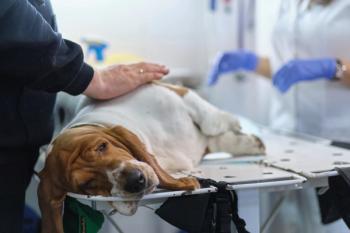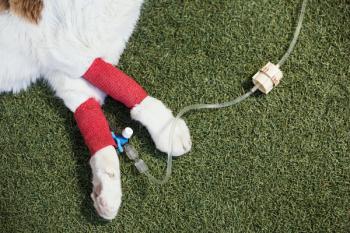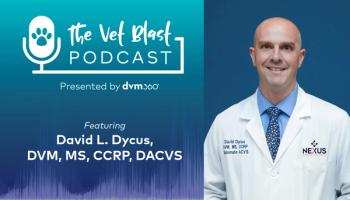
A candid conversation with veterinarian Ralph Brinster, 'Father of Transgenesis'
Penn's Ralph Brinster shares insights of 50 years in veterinary medicine studying mammalian germ line.
For the past five decades, Ralph Brinster, VMD, PhD, Richard King Mellon Professor of Reproductive Physiology at the University of Pennsylvania's School of Veterinary Medicine, has been working on furthering our understanding of the mammalian germ line. During that time, he helped forge the path that today's biologists—including those working on transgenics and stem cell research—are following.
Brinster was recently recognized for his 50 years of dedicated service as a faculty member in the Department of Animal Biology. The university and school held a two-day symposium in his honor, and research scientists from around the world participated. Michael Brown, a Nobel Laureate in Physiology or Medicine, presented the keynote lecture at the symposium.
Ralph Brinster, VMD, PhD
Brinster is often referred to as the "Father of Transgenesis," the study of the experimental transfer of individual genes or DNA into the germ line of an animal, which then transmits the genetic alteration to offspring and successive generations. Many may remember the famous Nature cover story of 1982 that showed a normal-sized white mouse being dwarfed by his giant mouse sibling. That was Brinster's work, along with his colleague Richard Palmiter of the University of Washington. Through painstaking experimentation, during which they inserted new genes into the germ line, Brinster and Palmiter demonstrated, in a dramatic and unequivocal manner, the true promise of transgenics. The "giant mouse" research was reported on the front page of most major newspapers around the globe.
For his groundbreaking work, Brinster was named one of seven scientists to win the National Medal of Science in 2010, a highly prestigious award that is given annually by the president of the United States. Brinster is the first veterinarian to be so honored and only the eighth from the University of Pennsylvania in the 50-year history of the medal. He received his medal in October 2011 from President Obama himself during a ceremony held at the White House. In August of this year, the Theriogenology Foundation presented the 2012 Career Excellence in Theriogenology Award for his contributions to the field of reproductive veterinary medicine.
An exceptional honor: Brinster is the only veterinarian to receive the National Medal of Science, presented last year by President Obama.
DVM Newsmagazine recently caught up with Dr. Brinster in his office at the University of Pennsylvania School of Veterinary Medicine in Philadelphia.
DVM: How did you decide to work on the mammalian germ line?
Brinster: I grew up on a farm where we raised purebred animals. Genetics was fundamental on the farm in terms of breeding success and the potential profit gained from that endeavor. I learned at an early age that you must improve animal germ lines to succeed.
Three separate stages are important to consider in studying germ lines: Pedigree tells you what you think you should get. Performance is what you actually get. And progeny is what can be passed on to offspring. For example, a horse can have a great pedigree but never win a race, or be a great racer but never sire winners. So in the end you depend on progeny to ultimately prove the power, quality and characteristics of the germ line of an animal.
DVM: What excited you about work with germ cells?
Brinster: They are the only cells that biology really cares about. What is important to the biology of the species is actually the DNA in the gametes or germ cells. Therefore, on the basis of my background on the farm, my animal science training at Rutgers and my education in veterinary medicine, I felt they were the most important cells in any animal.
DVM: You started using stem cells in the 1970s, demonstrating that non-embryo-injected cells become part of the developing mouse. Why did you start that research?
Brinster: I believed that the introduction of stem cells early in development would allow them to take part in maturation of tissues. These are the studies that resulted in the teratocarcinoma cells being injected into blastocysts.
While we were trying to explore techniques to get better teratocarcinoma cells or similar cells to enter the germ line, I began developing techniques that might allow the introduction of genes directly into fertilized eggs. At first we worked with chromosomes, but they were difficult to handle. Fortunately, other scientists were developing recombinant DNA techniques, which made pure populations of specific genes available.
It was difficult to obtain funding for these studies because the probability of success appeared very low. To obtain funding for this type of study, injecting eggs with nucleic acids, I began studies putting messages for proteins into eggs to study the mechanisms by which the egg produced the specific proteins. One of the proteins I planned to study was ova albumin, and Richard Palmiter had done excellent studies with this protein. I contacted him to obtain the messenger RNA. However, he had stopped working on ova albumin and was working with metallothionein genes. Although I was already working with several molecular biologists and trying to introduce new genes into eggs, I was interested in other possible genes, but the metallothionein gene was present in mice, and there was no good assay to distinguish it from the endogenous protein.
However, I used the ova albumin messenger RNA for my protein studies, and later described these studies to Richard. At that time, he told me he was fusing the metallothionein promoter to the herpes simplex virus thymidine kinase gene, for which I had an assay. So I asked Richard to send me the fusion gene, and we began collaborating on microinjection of the gene into eggs. In the spring of 1981, we obtained transgenic mice expressing the metallothionein thymidine kinase fusion gene, and Richard and I then published the results of these studies in Cell several months later.
DVM: Tell us about the giant-mouse experiment of the early 1980s.
Brinster: I was very interested in making changes in the biology of the mouse using the transgenic technology, and one of the changes I envisioned was a correction of genetic defects. Richard and I discussed this project, which eventually led to the use of the metallothionein-growth hormone fusion gene in an attempt to correct the genetic defect in the "little" mice. The experiment was a success and was published in Nature 30 years ago this December. The effect was dramatic, and the experiment catalyzed interest in the transgenic technique among scientists as well as the general public. A picture of a large mouse next to its normal-sized sibling was published on the cover of Nature and appeared on the front page of most newspapers throughout the world.
DVM: I remember that photo. I was stunned by it and the research it represented. That must have been exciting for you, to get that much recognition for your work.
Brinster: Yes, I was surprised. The phone did not stop ringing for the entire day the picture appeared on the Nature cover. It brought a great deal of recognition to the scientific area and to our work, as well as the experiments of others working and contributing in this area.
DVM: What are your thoughts on the state of veterinary stem cell research today?
Brinster: It is critically important to understand how tissues develop, both normally and abnormally. I am not surprised that researchers are now studying the stem cell basis of cancer. I felt in the 1970s, when I was studying the teratocarcinoma cell, that all cancers must have a stem cell basis. It seemed logical that the cancer, like any self-perpetuating tissue, must have a stem cell basis, as well as a differentiation process, which is unregulated in cancer. The study of stem cells, including those of cancer, is an important area of investigation within veterinary medicine. Many veterinary schools are currently involved in innovative stem cell research.
DVM: What are you working on now?
Brinster: I am still studying the mammalian germ line and germ line cells. One area of investigation is related to human spermatogonial stem cells. About 80 percent of children with cancer are cured, but almost one-third of the prepubertal boys that recover become infertile or severely subfertile, which is a serious quality-of-life issue. About one in 5,000 reproductive-age men currently are cancer survivors with seriously impaired fertility. One method to alleviate this problem is to obtain a testicular biopsy before cancer treatment begins, and then use the stem cells from this cryopreserved biopsy at a later time to correct infertility. To be successful one must be able to expand the number of stem cells in the biopsy. Therefore, one of the main areas on which we have been working, in collaboration with researchers from the Children's Hospital of Philadelphia, is the cultivation of human spermatogonial stem cells. This has proven to be very difficult, but I am sure we will be successful.
DVM: You are the only veterinarian to ever receive the National Medal of Science. What was that day like for you, meeting President Obama in the White House?
Brinster: It was extremely rewarding to be recognized by such a distinguished jury as the one that selects National Medal of Science winners. The ceremony itself was exceptional, and winning the Medal of Science brought well-deserved recognition to the School of Veterinary Medicine, my department and Penn.
DVM: What do you think your legacy in the veterinary and the broader scientific community will be?
Brinster: I think I will be recognized for my work on transgenics, in part because it has been tremendously important as a scientific breakthrough. However, many believe that it represents more, because it provides a method by which man can experimentally modify the germ line of species and thus change the "program of life." This ability is a major change in man's relationship to other species.
DVM: What changes have you seen in your 50 years teaching in veterinary school?
Brinster: The diversity of opportunities for students in their veterinary education and the many areas in which they can use their training following graduation is now enormous. They can contribute to many aspects of society now, and veterinary medicine has become critical to a wide range of problems. One particular area in which veterinary medicine will be especially important is related to zoonotic diseases. Approximately 70 percent of new infectious diseases affecting humans currently arise from animals, which represent the reservoir. This is just one example of an area in which veterinarians are critically important to societal health.
Donna Loyle, MS, is a freelance writer in Philadelphia who specializes in medicine and veterinary science.
Newsletter
From exam room tips to practice management insights, get trusted veterinary news delivered straight to your inbox—subscribe to dvm360.



